Evolutionary Ecology
The department of Evolutionary Ecology gathers complementary skills in behavioural ecology, population dynamics, population biology, community ecology, and methodology (statistics and modelling). The research done in the department aims at studying how animal species evolve in a changing world by understanding the causes of the evolution of traits, adaptations and interactions. For that, we consider different levels of organization from individuals to populations and communities. Because organisms cannot be considered isolated from other biotic factors, we consider pathogens but also competing species within communities.
We study how individuals adapt to their environments that are largely impacted by anthropic pressures, and how life history traits and behaviour evolve in response to these pressures. Although we mainly focus on phenotype, we more and more consider the mechanistic link between the genotype and the phenotype. We develop the theoretical framework of our discipline through a conceptual and modeling approach. In parallel, we test hypotheses that arise from theoretical predictions through experimental, comparative and observational approaches on different biological models (insects, birds, mammals). Experimental approaches are developed in the laboratory (insect model) and in natura (bird, insect and mammal models). Observational and comparative research is mainly concerned with vertebrates. Our approaches are also, and increasingly, interested in the mechanisms of adaptive responses. In addition to the classical approaches of demographic analysis and trait change, methods of ecophysiology, chemical ecology and molecular biology are used.
Our department hosts several long-term studies of wild populations of different species. These long-term studies offer a valuable way to understand how biotic and abiotic factors affect individuals’ life history traits, and the functioning of populations in natura. Five populations of mammalian species are thus monitored for several years (more than 40 years on roe deer, 30 on Alpine marmots, 25 years on cats, 16 years on zebras, and 20 years on impala). Two of our study sites (La Sassière in Vanoise National Park (Alpine marmots) and Hwange National Park) have been certified as “Site d’Etude en Ecologie Globale” (SEEG), and two (ZA “Hwange” and ZA “Antarctic and sub-Antarctic”) were certified as “Zone Atelier” by the CNRS.
The department of Evolutionary ecology is also largely involved in training activities. Lastly, we also have strong socio-economic relationships. Indeed, because we address questions of major societal interest (global warming, public health) we tightly collaborate with socio-economic partners (Office Français de la Biodiversité, Vanoise National Park, Hwange National Park in Zimbabwe, Office National des Forêts, etc.) and participate to general public and media events.
Publications
Display of 1711 to 1740 publications on 2455 in total
Transmission dynamics of Toxoplasma gondii along an urban–rural gradient
Theoretical Population Biology . 78 : 139-147
Journal article
see the publicationAdditional haplogroups of Toxoplasma gondii out of Africa: population structure and mouse-virulence of strains from Gabon.
PLoS Neglected Tropical Diseases . 4 ( 11 ) : e876
Journal article
see the publicationSize-assortative pairing in Gammarus pulex (Crustacea: Amphipoda): a test of the prudent choice hypothesis.
Animal Behaviour . 79 ( 4 ) : 911-916
Journal article
see the publicationCosts and benefits of colony size vary during the breeding cycle in Black-headed Gulls
Journal für Ornithologie = Journal of Ornithology . 151 ( 4 ) : 881-888
Journal article
see the publicationBiogéographie Microbienne: mythe ou réalité ?
Ecologie 2010 . : n.p.
Conference paper
see the publicationOnline Reproducible Research: An Application to Multivariate Analysis of Bacterial DNA Fingerprint Data
The R Journal . 2 ( 1 ) : 44-52
Journal article
see the publicationCuticular proteins and seasonal photoperiodism in aphid
Insect Biochemistry and Molecular Biology . 40 ( 3 ) : 235-240
Journal article
see the publicationEvolutionary history of the bank vole Myodes glareolus: a morphometric perspective
Biological Journal of the Linnean Society . 100 ( 3 ) : 681-694
Journal article
see the publicationEvolutionary trends of the pharyngeal dentition in Cypriniformes (Actinopterygii: Ostariophysi).
PLoS ONE . 5 ( 6 ) : e11293
Journal article
see the publicationSynergy in information use for mate finding: demonstration in a parasitoid wasp
Animal Behaviour . 79 ( 6 ) : 1307-1315
Journal article
see the publicationDevelopment of partial life-cycle experiments to assess the effects of endocrine disruptors on the freshwater gastropod Lymnaea stagnalis; a case-study with vinclozolin.
Ecotoxicology . 19 ( 7 ) : 1312-1321
Journal article
see the publicationModeling the global fishmeal and fish oil markets
Natural Resource Modeling . 22 ( 4 ) : pp.564-609
Journal article
see the publicationTeachers' conceptions of nature and environment in 16 countries
Journal of Environmental Psychology . 29 ( 4 ) : 407-413
Journal article
see the publicationDistance-based eigenvector maps (DBEM) to analyse metapopulation structure with irregular sampling
Ecological Modelling . 220 ( 20 ) : 2683-2689
Journal article
see the publicationStudying ecological communities from a neutral standpoint: a review of models' structure and parameter estimation
Ecological Modelling . 220 ( 20 ) : 2603-2610
Journal article
see the publicationIdentification of food webs for freshwater river fishes for food-web modelling purposes
International Symposium on Toxicity Assessment . : 1
Poster
see the publicationContinental-scale patterns of cecropia of phenology: evidence from herbarium specimen
Impacts of Global Change on Tropical Ecosystems - cross-cutting the Abiotic, Biotic and Human Spheres .
Poster
see the publicationA phylogenomic analysis of bacterial helix-turn-helix transcription factors
FEMS Microbiology Reviews . 33 ( 2 ) : 411-429
Journal article
see the publicationPopulation level integration of individual effect measurements for in situ water quality assessment: a modelling approach with Gammarus fossarum (Crustacean) and Potamopyrgus antipodarum (Gastropod)
Final MODELKEY Conference . : 1
Poster
see the publicationModeling and in situ caging for a realistic extrapolation of ecotoxicological effects at the population level: a methodological approach with Gammarus fossarum (Crustacean) and Potamopyrgus antipodarum (Gastropod)
14th ISTA . : 1
Poster
see the publicationA temperature-dependent von Bertalanffy growth model applied to bullhead (Cottus gobio)
RIF .
Conference paper
see the publicationMatrix population models as relevant modeling tools in ecotoxicology
Ecotoxicology Modeling, Emerging Topics in Ecotoxicology: Principles, Approaches and Perspectives 2 . : 261-298
Book chapter
see the publicationToxicity of ivermectin on cladocerans: comparison of toxic effects on Daphnia and Ceriodaphnia species
Environmental Toxicology and Chemistry . 28 ( 10 ) : 2160-2166
Journal article
see the publicationCan cat predation help competitors coexist in seabird communities?
Journal of Theoretical Biology . 262 ( 1 ) : 90
Journal article
see the publicationEvolution of microparasites in spatially and genetically structured host populations: The example of RHDV infecting rabbits
Journal of Theoretical Biology . 257 ( 2 ) : 212
Journal article
see the publicationWhen domestic cat (\textitFelis silvestris catus) population structures interact with their viruses
Comptes Rendus. Biologies . 332 ( 2-3 ) : 321-328
Journal article
see the publicationAssessing the performance of NDVI as a proxy for plant biomass using non-linear models: a case study on the Kerguelen archipelago
Polar Biology . -- : 125-132
Journal article
see the publicationDistribution et déterminisme de la diversité des communautés de champignons telluriques à l'échelle de trois régions françaises
4ème colloque de l'Association Francophone d'Ecologie Microbienne : le livre des résumés . : 91
Conference paper
see the publicationControlled ectomycorrhization of an exotic legume tree species Acacia holosericea affects the structure of root nodule bacteria community and their symbiotic effectiveness on Faidherbia albida a native Sahelian Acacia
Soil Biology and Biochemistry . 41(6) : 1245-1252
Journal article
see the publicationBiogeographical patterns of soil bacterial communities
Environmental Microbiology Reports . 1 ( 4 ) : 251 - 255
Journal article
see the publication
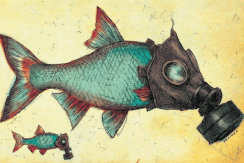
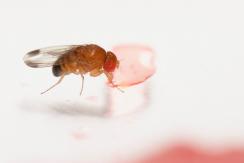
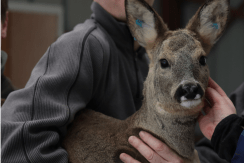
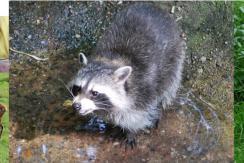
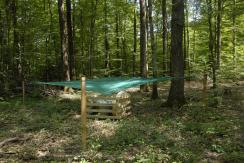
You also, comment on this article